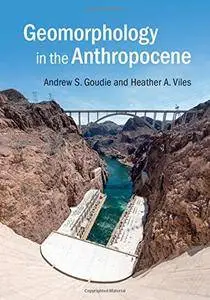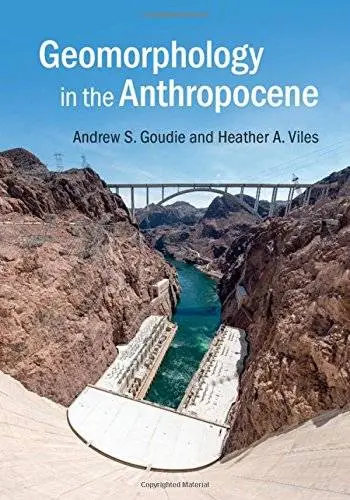Geomorphology in the Anthropocene
Cambridge | English | October 2016 | ISBN-10: 1107139961 | 380 pages | PDF | 8.44 mb
Cambridge | English | October 2016 | ISBN-10: 1107139961 | 380 pages | PDF | 8.44 mb
By Andrew S. Goudie, University of Oxford, Heather A. Viles, University of Oxford
Description
The Anthropocene is a major new concept in the Earth sciences and this book examines the effects on geomorphology within this period. Drawing examples from many different global environments, this comprehensive volume demonstrates that human impact on landforms and land-forming processes is profound, due to various driving forces, including: use of fire; extinction of fauna; development of agriculture, urbanisation, and globalisation; and new methods of harnessing energy. The book explores the ways in which future climate change due to anthropogenic causes may further magnify effects on geomorphology, with respect to future hazards such as floods and landslides, the state of the cryosphere, and sea level. The book concludes with a consideration of the ways in which landforms are now being managed and protected. Covering all major aspects of geomorphology, this book is ideal for undergraduate and graduate students studying geomorphology, environmental science and physical geography, and for all researchers of geomorphology.
The Anthropocene has become a hot topic in the last decade or so and the relationship between geomorphology and the Anthropocene needs to be explored
Provides a new focus for the field of geomorphology, helping to stimulate further research paths
Links geomorphology to major environmental issues and human concerns, such as future climate change, illustrating the value of this discipline
Reviews & endorsements
"Among contemporary physical geographers, there are none who are the equal of Andrew Goudie and Heather Viles in their ability to synthesize vast areas of the literature and to bring out new meanings from the avalanche of data that is published each week … This is the first book that explores, in depth, the relation between the Anthropocene epoch and landscape science (geomorphology) … [It] can be recommended to any serious student of the global implications of human modification of Earth's surface … [as well as to the] geoscience and environmental science communities, from geographers to geologists and geophysicists."
Olav Slaymaker, University of British Columbia
"What an interesting topic! What a good book! It presents the geomorphological evidence for the concept of the Anthropocene … With great clarity the authors give a wonderful review of the issues and a very clear account of the problems involved in selection of the start point and character of the possible new stratigraphical unit. Breathtaking in scope, it also gives a fine account of geomorphological processes and landforms linked to human achievements."
Denys Brunsden, King's College London
"In this comprehensive examination of human impacts on diverse landscapes, Goudie and Viles provide numerous examples and details of how human activities have altered and continue to alter Earth's surface. This book provides a valuable reference and thorough overview for students and professionals."
Ellen Wohl, Colorado State University
"In today's climate of media-induced alarm about what mankind is doing to our planet, this book stands out as a calm and considered appraisal of human impacts on Earth resources and natural systems. Few are better placed than these authors to interpret the scientific data on human and natural forces driving those rapid changes currently challenging sustainability of Earth systems."
Michael Crozier, Victoria University of Wellington
Authors
Andrew S. Goudie, University of Oxford
Andrew S. Goudie is an Emeritus Professor of Geography at the University of Oxford. He specialises in the study of desert processes and climate change, and has worked in the Middle East, India and Pakistan, East Africa, Southern Africa, Australia, and the USA. From 2005 to 2009, Professor Goudie was President of the International Association of Geomorphologists and he has also been President of the Geographical Association, President of Section E of the British Association, and Chairman of the British Geomorphological Research Group. He was the recipient of the Farouk El-Baz Prize for Desert Research from the Geological Society of America in 2007 and the Founder's Medal of the Royal Geographical Society in 1991.
Heather A. Viles, University of Oxford
Heather Viles is Professor of Biogeomorphology and Heritage Conservation at the University of Oxford. Her research focuses on understanding weathering and rock breakdown in coastal, arid, and urban environments, and applying that knowledge to conserving heritage sites. She also works extensively on the links between geomorphology and ecology. Professor Viles has been Chairman of the British Society for Geomorphologists, Vice President (fieldwork) of the Royal Geographical Society, and is currently on the executive committee of the International Association of Geomorphologists. She received the Ralph Alger Bagnold Medal from the European Geosciences Union in 2015 for establishing the field of biogeomorphology.



